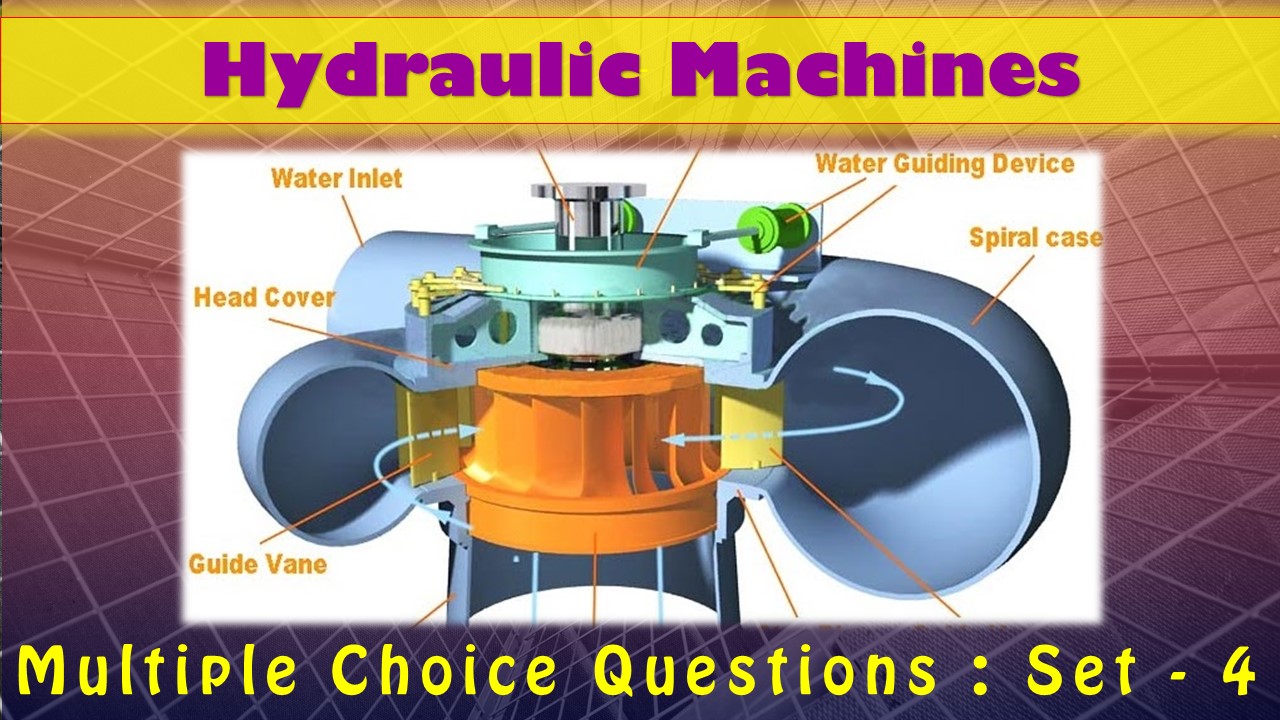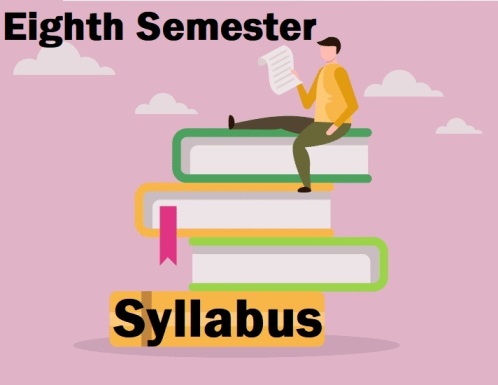MCQ Questions Mechanical Engineering Hydraulic Machines
The interviewer is almost as nervous as the candidate in most interviews. You might wonder if you look confident enough, if you will hire the right person, or if you are asking the right engineering interview questions. The last question is arguably the most crucial part to worry about when you’re interviewing candidates.
MCQ Questions Mechanical Engineering Hydraulic Machines - Set - 4
Question 1:
Francis, Kaplan and propeller turbines fall under the category of
(a) Impulse turbines
(b) Reaction turbines
(c) Axial flow turbines
(d) Mixed flow turbines
Correct Answer – (B)
Question 2 :
The flow rate in gear pump
(a) increases with increase in pressure
(b) decreases with increase in pressure
(c) more or less remains constant with in-crease in pressure
(d) unpredictable
Correct Answer – (C)
Question 3 :
Guide angle as per the aerofoil theory of Kaplan turbine blade design is defined as the angle between
(a) lift and resultant force
(b) drag and resultant force
(c) lift and tangential force
(d) lift and drag
Correct Answer – (A)
Question 4 :
Casting of a centrifugal pump is designed so as to minimize
(a) friction loss
(b) cavitation
(c) static head
(d) loss of kinetic energy
Correct Answer – (D)
Question 5 :
The specific speed of turbine is defined as the speed of a unit
(a) of such a size that it delivers unit dis-charge at unit head
(b) of such a size that it delivers unit dis-charge at unit power
(c) of such a size that it requires unit power per unit head
(d) of such a size that it produces unit horse power with unit head
Correct Answer – (D)
MCQ Questions Mechanical Engineering Hydraulic Machines
Question 6:
Impulse turbine is generally fitted
(a) at the level of tail race
(b) little above the tail race
(c) slightly below the tail race
(d) about 2.5 m above the tail race to avoid cavitation
Correct Answer – (D)
Question 7:
Francis turbine is best suited for
(a) medium head application from 24 to 180 m
(b) low head installation up to 30 m
(c) high head installation above 180 m
(d) all types of heads
Correct Answer – (A)
Question 8:
In reaction turbine, draft tube is used
(a) to transport water downstream without eddies
(b) to convert the kinetic energy to flow energy by a gradual expansion of the flow cross-section
(c) for safety of turbine
(d) to increase flow rate
Correct Answer – (B)
Question 9:
A turbine pump is basically a centrifugal pump equipped additionally with
(a) adjustable blades
(b) backward curved blades
(c) vaned diffusion casing
(d) inlet guide blades
Correct Answer – (C)
Question 10:
High specific speed of turbine implies it is
(a) propeller turbine
(b) Francis turbine
(c) impulse turbine
(d) any one of the above
Correct Answer – (A)
- NCERT Solutions Class 11 Physics Chapter 1 : Physical world
- NCERT Solutions Class 11 Physics Chapter 2 : Units And Measurements
- NCERT Solutions Class 11 Physics Chapter 3 : Motion In A Straight Line
- NCERT Solutions Class 11 Physics Chapter 4 : Motion In A Plane
- NCERT Solutions Class 11 Physics Chapter 5 : Laws of Motion
- NCERT Solutions Class 11 Physics Chapter 6 : Work Energy Power
- NCERT Solutions Class 11 Physics Chapter 7 : Rotational-Motion
- NCERT Solutions Class 11 Physics Chapter 8 : Gravitation
- NCERT Solutions Class 11 Physics Chapter 9 : Mechanical Properties of Solids
- NCERT Solutions Class 11 Physics Chapter 10 : Mechanical Properties of Fluids
- NCERT Solutions Class 11 Physics Chapter 11 : Thermal Properties of Matter
- NCERT Solutions Class 11 Physics Chapter 12 : Thermodynamics
- NCERT Solutions Class 11 Physics Chapter 13 : Kinetic Theory
- NCERT Solutions Class 11 Physics Chapter 14 : Oscillations
- NCERT Solutions Class 11 Physics Chapter 15 : Waves
Multiple Choice Questions for Competitive Exams
- MCQ Questions Class 11 Chemistry Environmental Chemistry with Answers
Set -1 Set -2 Set -3 Set -4 Set -5 - MCQ Questions Class 11 Chemistry Hydrocarbons with Answers
Set -1 Set -2 Set -3 Set -4 Set -5 - MCQ Questions Class 11 Chemistry Organic Chemistry with Answers
Set -1 Set -2 Set -3 Set -4 Set -5 - MCQ Questions Class 11 Chemistry The p Block Elements with Answers
Set -1 Set -2 Set -3 Set -4 Set -5 - MCQ Questions Class 11 Chemistry The s Block Elements with Answers
Set -1 Set -2 Set -3 Set -4 Set -5 - MCQ Questions Class 11 Chemistry Hydrogen with Answers
Set -1 Set -2 Set -3 Set -4 Set -5


